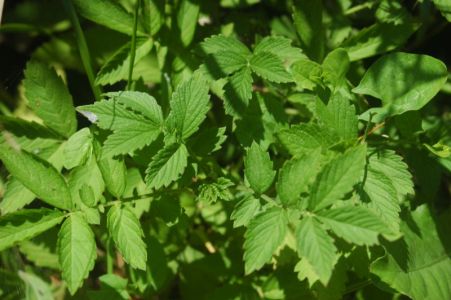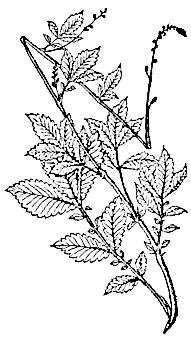

Agrimonia pilosa. 仙鶴草 Xiān hè cǎo- "Immortal crane grass" Hairy agrimony, Shaggy Speedwell, Dragon Tooth Grass Family: Rosaceae
Pilosa means "hairy", in Latin.
 FLAVOR: Bitter, biting CHANNELS:
Lung, Liver
FLAVOR: Bitter, biting CHANNELS:
Lung, LiverFUNCTIONS- Assistant herb
GROUP: Regulating Blood- Styptic
1. Antipyretic and eliminates Dampness.
2. Strengthens heart by regulating heart beat- over use will slow heart beat.[3]
INDICATIONS
1. All Bleeding ailments. Discharge of blood from mouth, hematemesis,[3] hematuria,[3] tenesmus with hemafecia.[3]
2. Abdominal pain, sore throat, headache.
3. Hemafecia and mucoid dysentery, bloody and white discharge.
4. Heatstroke.
PREPARATIONS: Decoction. Dried plant above ground 6-12 g.[2]
Whole plant 9-30 g.[1] 15-30 g.[3]
 HABITAT:
Grows wild along hillsides and grassy thickets in waste places.
HABITAT:
Grows wild along hillsides and grassy thickets in waste places.